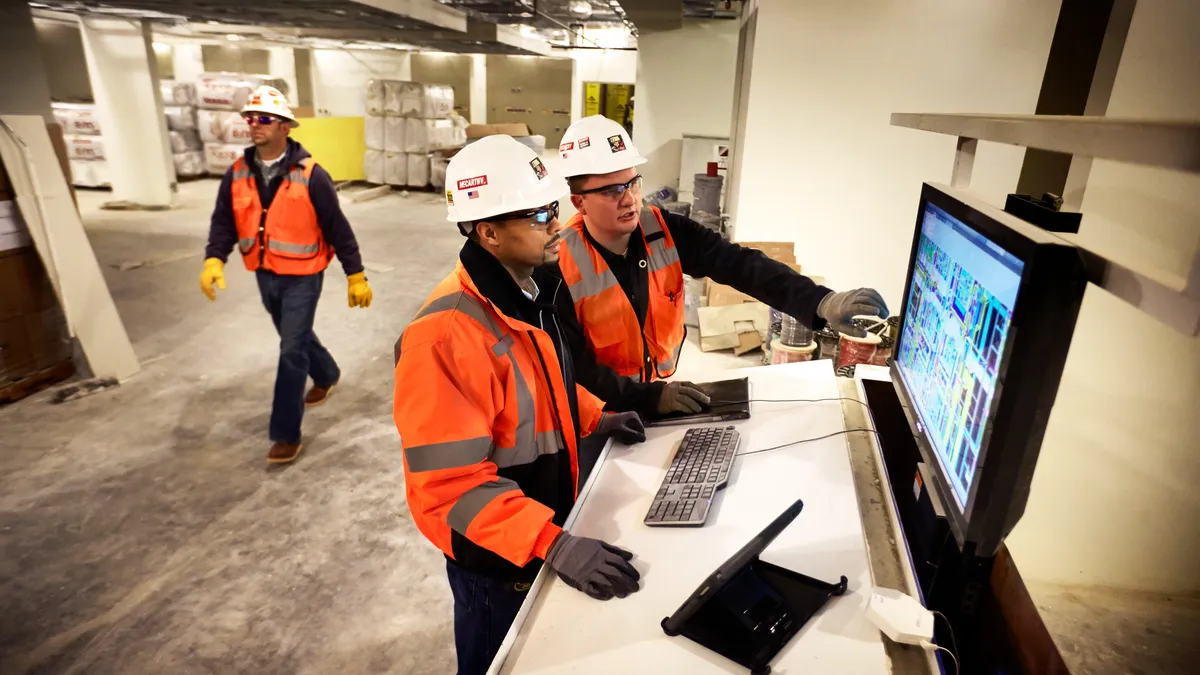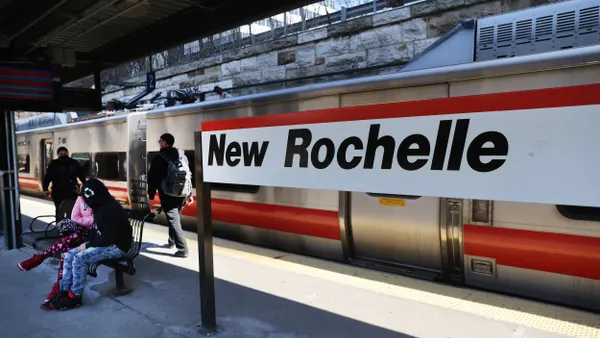Dive Brief:
- The NEXT Coalition, a construction technology consortium formed in 2020, is inviting companies, startups and other innovators to submit solutions related to digital twin technologies. The challenge marks the latest collaboration between business competitors, in the hope of mutually beneficial results.
- With this launch, the NEXT Coalition is making its first move away from COVID-19 safety and health solutions. It was first formed to collaboratively address pandemic-related challenges on the jobsite.
- The Coalition also recently announced Shawmut Design and Construction and HITT Contracting as new partner firms.
Dive Insight:
A digital twin is a virtual representation of a physical facility in the form of a three-dimensional model that contains evolving, dynamically updated data on the state of the project. Digital twin technology is used to simulate and predict how a product will perform, inform decisions and reduce costs. The global market for digital twins is expected to grow 38% annually to reach $16 billion by 2023, according to a Deloitte report.
The NEXT Coalition is seeking solutions that could enhance the digital twin approach in any of the following ways:
- Geometry: Reality-capture solutions that allow the digital twin to reflect the latest look of a facility.
- Data: Physical sensors and other Internet of Things (IoT) devices that supply a continuous stream of data about objects and environments of a facility.
- Platform: Both geometry and sensor data combine to offer near real-time insights on the current state of a facility.
Applications should apply to the construction phase and carry on for delivery to the owner for use in the operations and maintenance phase.
"The digital twin is specifically to help our clients after the project delivery, to be able to operate [and] maintain the facility in a more efficient manner," said Hamzah Shanbari, manager of construction technology and innovation at Haskell, an architecture, engineering, construction and consulting firm. He added digital twins can also help during the design phase, such as determining where sensors or IoT devices should go.
The team has received around 10 applications so far, said Shanbari, but "it's still early on." The digital twin challenge application window will last around six months until February or March of 2022, he said.
The Coalition launched its first challenge around safety solutions in July 2020 in response to the health issues presented by the COVID-19 pandemic. After receiving nearly 100 submissions for that challenge, the Coalition selected Wakecap, Imajion, GoContractor, Remote Optix, Document Crunch and Inspected as featured presenters. The solutions range from digital pre-screening of workers to smart video monitoring for health and safety.












